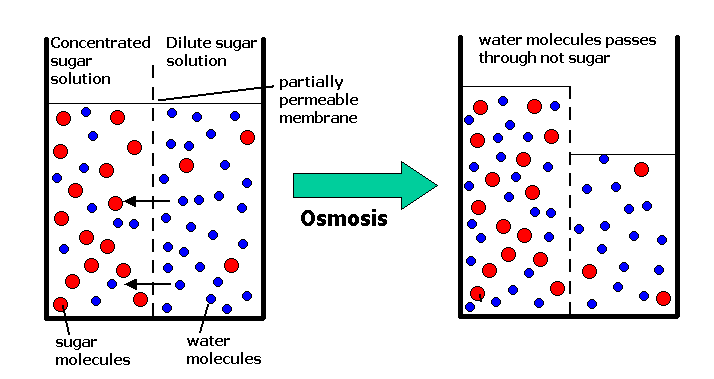Biology


- Q: Discuss The Role Of Membranes In The Synthesis Of Atp During Photosynthesis
The chloroplast is enclosed by two membranes, and this separates reactions within the chloroplast from the rest of the cytoplasm. The double membrane of the chloroplast also serves to maintain high substrate concentrations within the chloroplast for photosynthesis....
- Cellular Transport
Cellular Transport? Sounds like something off of a Syfi movie, doesn't it? But this ladies and gentlemen, is real!There are four different types of Cellular Transport: diffusion, osmosis, facilitated diffusion, and active transport. The purpose...
- Diffusion And Osmosis Video
The following is a video clip illustrating diffusion just as we did and a slightly different osmosis experiment, which looks at mass change due to water moving in or out of the tube with a semi-permeable membrane. ...
- #27 Summary Of Cell Membrane
1 The basic structure of a membrane is a 7 nm thick phospholipid bilayer with protein molecules spanning the bilayer or within one or other layer. Phospholipids and some proteins move within the layers. Hence the structure is described as a fluid mosaic...
- # 25 Passive And Active Transport Across Cell Membranes
Substances can enter or leave a cell in 2 ways: 1) Passive a) Simple Diffusion b) Facilitated Diffusion c) Osmosis (water only) 2) Active a) Molecules b) Particles I. Passive transport across cell membranes 1. Diffusion Molecules and ions move...
Biology
Comparison between Diffusion and Osmosis
Comparison between Diffusion and Osmosis (Major Differences between Diffusion and Osmosis)

| Diffusion | Osmosis |
| It is the movement of particles, molecules or ions from higher concentrated region (higher free energy region) to their lower concentrated region (lower free energy region) | It is the movement of solvent or water from the area of its higher concentrated region to its lower concentrated region through a semi-permeable membrane. |
| It can occur in any type of medium | It occurs only in liquid medium |
| Diffusing molecules may be solids, liquids or gases. | It involves the movement of solvent molecules only. |
| It does not require a semi-permeable membrane. | It requires a semi-permeable membrane. |
| It is purely dependent upon the free energy of the diffusing substance only. | It depends upon the free energy (chemical potential) of the solvent present on the two sides of the semi-permeable membrane. |
| Equilibrium in the free energy of diffusing molecules is achieved in the end. | Equilibrium in the free energy of solvent molecules is never achieved. |

- Q: Discuss The Role Of Membranes In The Synthesis Of Atp During Photosynthesis
The chloroplast is enclosed by two membranes, and this separates reactions within the chloroplast from the rest of the cytoplasm. The double membrane of the chloroplast also serves to maintain high substrate concentrations within the chloroplast for photosynthesis....
- Cellular Transport
Cellular Transport? Sounds like something off of a Syfi movie, doesn't it? But this ladies and gentlemen, is real!There are four different types of Cellular Transport: diffusion, osmosis, facilitated diffusion, and active transport. The purpose...
- Diffusion And Osmosis Video
The following is a video clip illustrating diffusion just as we did and a slightly different osmosis experiment, which looks at mass change due to water moving in or out of the tube with a semi-permeable membrane. ...
- #27 Summary Of Cell Membrane
1 The basic structure of a membrane is a 7 nm thick phospholipid bilayer with protein molecules spanning the bilayer or within one or other layer. Phospholipids and some proteins move within the layers. Hence the structure is described as a fluid mosaic...
- # 25 Passive And Active Transport Across Cell Membranes
Substances can enter or leave a cell in 2 ways: 1) Passive a) Simple Diffusion b) Facilitated Diffusion c) Osmosis (water only) 2) Active a) Molecules b) Particles I. Passive transport across cell membranes 1. Diffusion Molecules and ions move...
